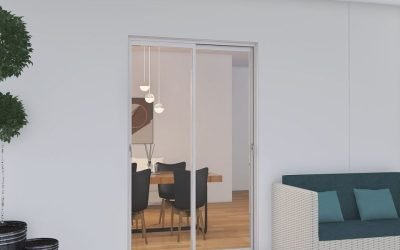An outdoor pathway is more than just a functional feature of your yard; it’s a design element that ties your landscaping together, guides foot traffic, and adds value to your property. When planning a new pathway, choosing the right materials is key to creating a durable, aesthetically pleasing, and low-maintenance surface. Whether you’re designing a walkway through your garden or creating a sturdy entrance to your front door, selecting the right material is essential to ensuring longevity and ease of use.
Among the most popular choices for outdoor pathways are block pavers, a versatile and durable material that is ideal for both residential and commercial projects. In this article, we’ll explore the key factors to consider when choosing materials for your outdoor pathway and highlight the benefits of pavers.
1. Consider the Purpose of the Pathway
The first step in choosing the right material for your outdoor pathway is to consider its intended use. Will it be a main walkway leading to your home’s entrance, or a decorative garden path used less frequently? The function of the pathway can greatly impact the material you choose.
For high-traffic areas like entrances or driveways, you’ll want a material that is durable, resistant to wear, and capable of withstanding heavy loads. For more decorative garden paths, you may have more flexibility in terms of materials, focusing on aesthetics rather than durability. for example, are ideal for both purposes because they offer a wide range of styles and colors, along with excellent durability.
2. Evaluate the Climate
Your local climate plays a significant role in the selection of pathway materials. Some materials may be better suited for colder regions with freezing temperatures, while others work best in warmer, dry climates. Pavers are an excellent choice in various climates because they are resistant to cracking during freeze-thaw cycles, a common issue with other materials like concrete or natural stone.
In areas with high rainfall, it’s important to choose materials that offer good drainage and won’t become slippery when wet. Pavers with textured surfaces can provide added traction in rainy or icy conditions, making them a safer choice for all weather conditions.
3. Durability and Longevity
One of the most important factors when choosing materials for your outdoor pathway is durability. Your pathway will be exposed to weather conditions, foot traffic, and possibly even vehicles, so it’s important to select materials that will last for years without frequent repairs or replacements.
Block pavers are known for their durability and strength, making them an excellent option for pathways that need to withstand frequent use and heavy loads. Unlike poured concrete, which can crack over time, pavers are individual units that can move with the earth’s natural shifts, reducing the likelihood of cracking. If a paver does get damaged, it’s easy to replace just the affected block rather than redoing the entire surface.
Other materials, such as gravel or wood, may require more frequent maintenance and are more susceptible to damage from weather or wear. Natural stone, while beautiful, can be prone to cracking or chipping, especially in freeze-thaw climates.
4. Aesthetic Appeal
The aesthetic of your pathway should complement the overall design of your home and landscape. Consider the colors, textures, and styles that will best match the surrounding environment. pavers come in a wide variety of colors, shapes, and patterns, allowing for endless design possibilities. You can create intricate patterns with pavers or opt for a more simple, traditional look.
Whether your home has a modern, rustic, or classic aesthetic, you can find pavers that enhance its appeal. For example, brick-style pavers give a timeless, traditional look, while larger, geometric pavers can complement a more contemporary landscape design. Additionally, the ability to mix and match different paver shapes and colors allows you to create custom designs that reflect your personal style.
5. Ease of Installation and Maintenance
When selecting materials for your outdoor pathway, it’s important to consider the ease of installation and future maintenance requirements. Some materials are easier to install and maintain than others, and choosing a low-maintenance option can save you time and money in the long run.
Pavers are relatively easy to install, and many homeowners choose to install them as a DIY project. However, professional installation ensures that the pavers are laid correctly and will last for years without issues. pavers require minimal maintenance compared to other materials like gravel, which can shift and require frequent leveling, or natural stone, which may need sealing to protect against the elements.
The only regular maintenance required for pavers is periodic sweeping and washing to keep the surface clean. If weeds begin to grow between the pavers, a simple application of weed killer or a quick weeding session can resolve the issue. Additionally, because pavers are installed individually, damaged or stained pavers can be replaced easily without disrupting the entire pathway.
6. Cost Considerations
Budget is always a consideration when planning a home improvement project, and outdoor pathways are no exception. The cost of materials varies widely depending on the type of material you choose, the size of the area, and whether you’ll need professional installation.
pavers are a cost-effective option compared to materials like natural stone or poured concrete. They offer a good balance between affordability and durability, making them a great choice for homeowners who want a high-quality material that won’t break the bank. While there may be cheaper options, such as gravel or wood chips, they often require more frequent maintenance and replacement, which can end up costing more over time.
Additionally, pavers add significant value to your property. A well-designed, durable pathway can improve curb appeal and increase the overall value of your home, making it a worthwhile investment.
7. Environmental Considerations
If you’re concerned about the environmental impact of your materials, there are eco-friendly options available. Permeable pavers, for example, allow water to drain through the surface, reducing runoff and helping to replenish groundwater supplies. This makes them an excellent choice for homeowners looking to create a more sustainable outdoor space.
Additionally, pavers are often made from recycled materials, further reducing their environmental footprint. By choosing eco-friendly materials, you can create a beautiful outdoor space that is also kind to the environment.
Conclusion
Choosing the right materials for your outdoor pathway is an important decision that impacts not only the look of your landscape but also the durability and functionality of your walkway. Pavers offer an ideal solution for homeowners who want a durable, versatile, and attractive material that can stand up to the elements while offering endless design possibilities.
By considering factors like climate, durability, aesthetics, and cost, you can make an informed decision that will result in a beautiful and long-lasting pathway. Whether you’re creating a main entrance walkway or a garden path, pavers are a reliable, low-maintenance option that can enhance the overall look and value of your property.
- Sliding Door vs. Swinging Door: What Is the Better Option? - March 25, 2025
- Leeds Defies London: The Unexpected UK House Price Growth Champion - March 21, 2025
- How to Recession-proof Your Finances - March 21, 2025


